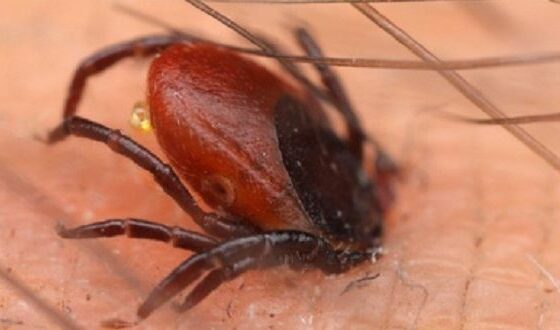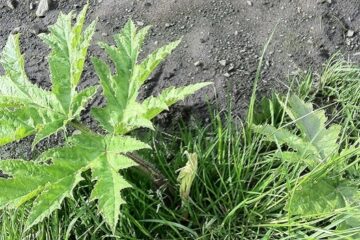A little known risk is of working in the great outdoors is Lyme disease. Anything which can be done to increase awareness of this nasty condition is worthwhile and since we’ve been doing a bit of work in moderately high risk areas recently it seemed like a good idea to write a post about it.
Lyme disease is a bacterial disease which is spread to humans from infected ticks, like the nasty looking critter in the picture above. If undetected this is a disease which can have seriously debilitating and life changing neurological effects.
The most obvious symptom is a red rash often described as a bullseye or target shaped rash centred on the site of the tick bite which can manifest 3 to 30 days after the bite. This doesn’t always appear though. The rash will be followed some by or all of the following; flu like symptoms, tiredness, headaches and joint or muscle pain. Later symptoms include muscle pain, joint swelling and pain and paralysis, particularly of the face. If left untreated this can become a chronic condition described as chronic Lyme Disease with symptoms similar to Fibromyalgia or Chronic Fatigue Syndrome.
All very nasty so what do you do? As ever prevention is better than cure.
The disease is exclusively spread by the bite of infected ticks which normally feed on wild animals. Ticks are found on a great many animals from deer to mice and everything in between but in the UK they tend to be most prevelant in areas where there are lots of deer or sheep. If you’re working or even just walking through land where these animals live, particularly dense or overgrown vegetation and there’s an increased risk of ticks a few simple precautions can help keep the wee blighters off your skin. Wear long trousers and sleeves, tuck trousers into socks or otherwise secure any holes in clothing. Use insect repellent. Check clothing to avoid bringing them home with you, light coloured clothes make this easier. Perhaps most important is to check yourself for ticks when you come home and check over any children or pets. It’s important to remember to check in your hairline, if checking yourself this is most easily done by touch or ask a friend to pretend to be a chimpanzee and check for you, eating any finds is optional. Be sure to check all over your body they’re particularly fond of armpits, the backs of knees and groin area. The risk of contracting Lyme disease from an infected tick increases the longer it’s allowed to stay attached so finding and removing them quickly is strongly advised.
Removal should be done either with a nifty little tick remover or a pair of tweezers. Get as close to the head as possible avoid squashing it’s body and pull straight out. The tick can then be squashed and disposed of in a tissue or washed away. If you’re feeling public spirited you can pop it in a plastic container and send it to the government monitoring scheme. Be aware that it may contain infected blood so avoid getting this on your hands. Do not burn, squash or cover ticks with petroleum jelly in fact just generally avoid doing anything other than a quick clean removal. If the tick gets stressed it may regurgitate it’s stomach contents into the wound greatly increasing risks of infection. A detailed guide with pictures and videos be found here.
If you do develop any symptoms then go to your GP as soon as possible and tell them that you were in an area where ticks are prevalent or if you know you were bitten by a tick let them know and that you suspect Lyme disease. Diagnosis is usually confirmed by blood tests however it’s important to be aware that the test is not effective immediately after infection it may take a few weeks for the infection to develop to a point where it’s detecable and the test isn’t 100% effective and re-tests may be required. Treatment is with antibiotics and if caught early a full recovery is likely.
2022
A friendly guide to site investigations
Have you been asked by your local planners or funders to undertake a site environmental survey, including intrusive investigation where necessary, to establish any environmental risks that may exist on your site? This guide will help.
Check it out







Leave a Reply